- Free eBook guide
- Before coming to Australia
- Budget for your Working Holiday
- The Working Holiday Visa
- Which city to arrive
- Packing Guide
- Backpacker Travel Insurance
- Cheap flights to Australia
- What to do on arrival
- Open an bank account
- How to transfer money
- CurrencyFair 5 free transfers
- WISE money transfers
- How to migrate to Australia
- Tourist Visa
- Working Holiday Visa
- Student Visa
- TSS Visa Sponsorship
- Partner Visa
- Travel insurance options
- Australian healthcare system
- Working Holiday Insurance
- Backpacker travel insurance
- Short term travel insurance
- International student insurance
- Travel insurance companies
- Go Walkabout promo code
- Living in Australia
- Accommodation guide
- Phone Plans in Australia
- Driving in Australia
- Cost of living in Australia
- Climate and Seasons
- Claim GST on expenses
- How to claim your tax return
- Claim your Superannuation
- New South Wales
- South Australia
- Western Australia
- Northern Territory
- POPULAR SPOTS
- NEW ZEALAND
- ASIA PACIFIC
- Travel Budget
- Climate and seasons
- Customs in Australia
- Itineraries ideas
- Road Trip Complete Guide
- Budget Road Trip
- Where to camp in Australia
- Choose and buy a vehicle
- Tips for everyday life
- News in Australia
- Festivals & events in Australia
- Just for fun
- Best stopovers from Europe
- When to buy your plane ticket
- Rent a cheap campervan in Australia
- Motorhome rental in Australia
- Car rentals in Australia
- How to rent a vehicle in Australia
- Rent a cheap campervan in NZ
- Motorhome hire in New Zealand
- Best Diving spots in Australia
- Great Barrier Tours – Best tours
- Best spots to surf in Australia
- Working in Australia
- Setting yourself up for work
- Writing a resume in Australia
- Wages in Australia
- Typical Backpacker jobs and salaries
- Certificates & training
- Getting your Tax File Number
- How to get an ABN
- How to claim your superannuation
- Housekeeping work
- Hospitality jobs
- How to find a job in hospitality
- Working in a bar
- RSA Certificate
- Coffee Barista course
- Gambling establishments (RSG / RCG)
- Work in construction
- Work as a Traffic Controller
- White Card certificate
- Become an Au Pair in Australia
- Get your Blue Card
- Fruit picking jobs
- Fruit picking map – contacts
- Fruit picking season – calendar
- How to apply for a second year
- How to calculate your 88 days
- Eligible areas for a second year
- Eligibles jobs for a second year
- Volunteering in Australia
- Work as a freelance
- Best Outback jobs
- Work in a road house
- Working in a cattle station
- Become a Hairdresser in Australia
- Find a professional job
- More job experiences
- Study in Australia
- International Student insurance
- Budget to study
- Diploma equivalency
- How to finance your studies
- Universities in Australia
- ANU: Australia’s number one uni
- Medicine studies in Australia
- Top 10 online courses
- Getting ready for your IELTS Test
- Find a student job
- Orientation Week
- Free study advice
- Internship in Australia
- $25 OFF RSA Courses
- $16 OFF White Card Courses
- $25 OFF RSG / RCG Courses
- 5% OFF Travellers Autobarn
- Cheap Campervan rental
- 10% OFF Go Walkabout
- 5 Free transfer with CurrencyFair

- Great Barrier Tours - Best tours
- News in Australia Be up to date. Here you will find all the news from Australia that are relevant for backpackers! All news at a glance!
- Festivals & events in Australia
- Wildlife Discover Australia’s wildlife! Find everything you ever wanted to know about Australia’s animals. Kangaroos, wombats, koalas, wallabies, crocodiles, Tasmanian devil, kookaburras, sharks, wales and many more… Understand Australia s animal kingdom and discover some adorable Aussie animals.
- Just for fun Funny articles about random things happening in Australia: Unusual events, illustrations, competitions and much more. Just for fun is entertaining and funny!

- Certificates & training
- Fruit picking map - contacts
- Fruit picking season - calendar

- More info Australia is a popular destination for both Working Holiday Visas and tourists, however, it is also worth considering Australia as a destination for studying. Better yet, foreign students are in great demand, with many nationalities. Many choose to study in Australia to improve their English skills, travel around Australia and to gain an international degree. Many choose to study in Australia.
- ANU: Australia's number one uni

- Work in Australia

Writing a resume in Australia (CV) – Guide and templates
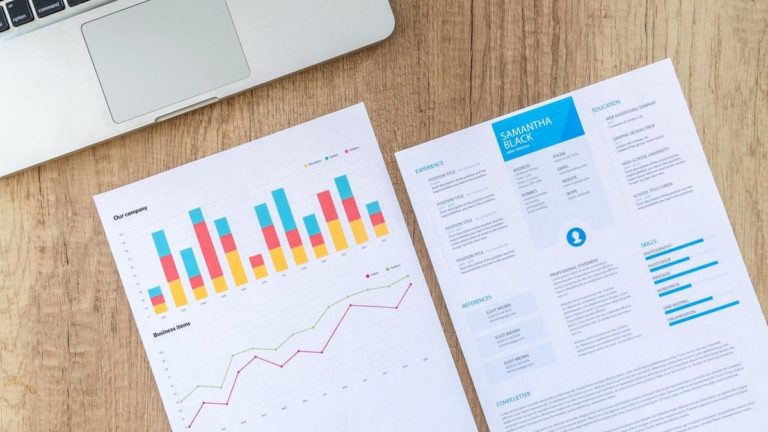
Are you planning a trip Down Under, and want to find a job while you’re over here? The first step to working in Australia is creating a great CV – but did you know that Australian CVs are quite different to English or American ones? Navigating the Australian job market can be challenging, especially for those new to the country. This guide provides you with essential tips and templates to craft a resume that stands out in the Australian job market.
Table of Contents
Tailoring your Resume for different Job types
As for all countries, a CV is an essential part of the job search in Australia. However, depending on the types of jobs you want to do in the country, your CV will be different. Do you see yourself working short-term on a farm, in a casual hospitality job, or in a long-term job in a city in your specific field? The steps for finding a job will vary depending on what you’re looking for. Now get creating the perfect CV to land you your dream job !
Do you need a resume for a farm job?
A resume is not always necessary to work in Australia . They won’t always ask you for one for farm jobs like fruit picking . If you are looking for a job on a farm, emailing a farmer your CV will often be a waste of time. It is better to go directly to the farms and speak with the owners or even call them and ask them if they are hiring. Independent farmers will usually not ask you for a CV in person but we still advise you to have one ready, for example if you have to apply online (this happens for some large companies).
CV for a long-term job
If you are looking for a long-term or stable job with a small or larger company, having a well-written CV that follows Australian criteria will be essential , especially for any job that requires experience or qualifications. Highlight specific professional skills, career progression, and significant achievements.
CV for a casual job
If you are looking for a more casual or temporary job in a supermarket or in catering, your CV will mainly serve to prove that you have a basic knowledge of English . It is also an excellent way to meet managers directly by handing in your CV. Focus on flexibility, customer service skills, and quick learning ability.
Since January 2024, working holiday visa makers can work for the same employer in Australia for more than 6 months without asking permission to the government if your work is: – in different locations and work in any one location does not exceed 6 months – in plant and animal cultivation anywhere in Australia – in certain industries (aged care and disability services, fishing and pearling, tree farming and felling, construction and mining, in northern Australia only) – natural disaster recovery work – in critical sectors, including agriculture, food processing, health, aged and disability care and childcare, anywhere in Australia – in the critical sector of tourism and hospitality anywhere in Australia. For any other situations not covered above, you must ask for permission to work longer than 6 months with one employer.

Certificates and trainings required to work in Australia
To work in certain industries in Australia, you will need to complete vocational training and obtain a certificate.
The most well-known certificates are:
- the RSA (Responsible Service of Alcohol): mandatory to work in an establishment where alcohol is served.
- the White Card : mandatory for all building trades, such as construction
- the RSG/RCG : mandatory to work in gambling establishments, such as casinos and game rooms.
- Barista : If you want to work in a coffee shop like Starbucks, MacCoffees or Gloria Jeans Coffee, you will need this training.
Showing on your CV that you have the certificates required will be a real asset when job hunting.
Save money on your RSA in Australia
Pay less for your RSA course (Responsible Service of Alcohol). With this certificate, you will be allowed to work in all places where alcohol is served or sold.
Download your free Australian resume templates
Download our customizable resume templates designed for the Australian job market. These templates cater to different job types and highlight the structure and content that employers expect.
👨🍳 CV template for working in hospitality in Australia
👨💼 cv template for working in marketing in australia.
Tip : For emailing your Australian resume, save the file in PDF format. This will prevent the layout from changing depending on different computers/operating systems.
Understanding Australian Resume Standards
Length of your resume.
First of all, you should know that an resume in Australia is often longer and more detailed than you might be used to. Resumes in Western Europe are usually kept to two pages, whereas an Australian resume can easily go up to five or even seven pages for a specialised job. So don’t hesitate to be specific about your experience and personal qualities.
You will also need to adapt your CV to the position you are applying for! This may seem logical, but consider presenting your experience differently depending on the job you are applying for. Some tasks, responsibilities or skills will be more relevant than others.
Of course, there are exceptions to this rule! To work in the hospitality industry as a waiter or dishwasher, for example, it is advisable to opt for a shorter CV comprising 1 or 2 pages to make it easier to read quickly. (This does not apply if you are aiming for, for example, a management position in a large hotel!) Also remember to indicate the Australian certificates that are necessary mandatory for the job, such as your RSA .
Resume in Australia: Photo or no photo?
It is not generally recommended to include a photo on your Australian CV. You should also avoid including your age or date of birth as there are age discrimination laws in Australia.
However, make sure to add a section for references . You will need to include the names and contacts of previous employers who would be happy to recommend you to a new employer. Choose people who speak English and with whom you have had a good relationship.
Key Sections of an Australian Resume
Here are the different sections that must appear on your Australian resume. The order of the sections is up to you . For instance, if you have little professional experience but have completed a course or degree related to the job you’re applying for, put the “Education” section before “Work Experience”. If you are looking for a job in catering, making the “Skills” section (including your RSA) appear before your work experience could be a good idea. As a general rule, start with your most recent experience.
1 – Personal Details
Make sure to include your:
- Local Australian address*
- Australian phone number
- Professional email address
- Optional : your LinkedIn profile (highly appreciated in Australia for certain types of jobs).
* The majority of employers prefer to hire workers already in Australia. So put down a local address, even if it is a backpackers hostel!
Reminder: It’s not necessary to include details like your date of birth, marital status, or photo, as these could lead to unconscious bias.
2 – Introduction: Quick presentation of yourself and what you are looking for
Describe your professional motivation in two or three sentences. What you are looking for in a job, and why your qualities make you the right person for this specific job . Remember to specify your availability (eg. Available from January 7th 2024). This is a very short, but very important part of your resume – it’s like a mini cover letter. The idea is that your potential employer will glance at it and makes a decision on whether he or she is interested in reading the rest of your resume in a split-second.
This part can be short if you are looking for a temporary or holiday job. For example to find a job in service, you can write “I am a UK traveler on a Working Holiday Visa and I am looking for a position as a waitress in Brisbane. I have my RSA certificate and I am available to start asap.” You can also decide to say more about yourself if you wish or to highlight your skills more.
The Australian resume is typically more comprehensive than in some other countries. It’s not just about listing your experience; it’s about presenting yourself as the ideal candidate for the job.
3 – Work Experience: “Employment history”
Provide a detailed description of the jobs you have done in the past. This includes your tasks and the responsibilities you had within the company . Highlight what you contributed to the company of your previous employers (e.g. if you worked at a bar and set up a Facebook page for them). Employers like to see that you show initiative.
As a traveller, we often want to get away from the work we did at home and try something new. If this applies to you, emphasise what you did in the past that could be an asset for this new job . For instance, if you are applying for a receptionist position, specify that you have experience hosting clients at another company.
Specify the name of the business and its industry , the start and end dates of your contract , your previous job titles , and the city and country where you worked.
Put your previous work experience in reverse chronological order , with your most recent job on the top. If you have had many different jobs in the past, only include those related to the job which you are applying for.
4 – Training and education: “Education and training”
List your education in reverse chronological order. This section should include both your degree and any professional training you have obtained such as internships, apprenticeships. For each point specify the name of the educational course, dates, school/ institution, city and country of graduation .
The Australian school system may differ from your home countries. In principle, it is built up as follows:
- High school degree;
- Bachelor’s degree;
- Advanced diploma ou Higher national certificate;
- Master’s degree;
- PhD (Doctorate).
5 – “Skills and strengths”
Highlight both hard and soft skills relevant to the job you’re applying for. Mention any certifications , languages, or technical skills .
- For a job in graphic design , specify your computer skills in a ‘computer skills’ sub-section and your soft skills in a ‘personal qualities’ section (e.g. your creativity and adaptability);
- To work in hospitality , emphasise your ability to work as part of a team, your organisational and interpersonal skills.
Specify the different languages you speak and your level of competency (e.g. native, intermediate, beginner). You can also add other diplomas and certificates here, such as the RSA , White Card , and Driver’s license.
This section is very important when looking for a job in Australia. If you are not a native English speaker, any potential employer will want to know whether your English is good enough for the job you’re applying for. Also, considering that for many jobs you are required to drive, it is important to mention whether you have a driver’s license or not.
6 – Hobbies: “Hobbies and interests”
Do not neglect this part of your CV, but do not list all your hobbies either! In fact, your activities, passions and commitments will allow your future employer to better understand you. Highlight the activities you do outside the professional sphere. Whether practising yoga, being a soccer captain or even participating in community activities, these elements reflect your personality and your qualities.
Volunteer Experience/Extra-curricular Activities: Especially for those with limited work experience, such activities can demonstrate your skills and commitment.
7 – References: “Referees”
Here you include the names of people you worked with in the past and their contact details . Make sure to check with them that they agree to be listed as a contact before adding them to this list. Your future employer will probably contact them to find out more about you and the way you work, so you want to only add people that will have something positive to say. If you are not comfortable giving this information at first, just add their names and state ‘Contact details available on request’ . This will also give you the opportunity to inform your contacts that they may get a call!
Get discounts on your White Card course
Take advantage of our special offers to get your White Card and work in the construction industry.
Tips & tricks for a great Australian Resume
Put australian contact details.
Once your resume is in an Australian format, you should update your phone number and address as soon as possible.
Australian employers are much more likely hire candidates who are already in Australia. Those who have an Australian address and phone number will have a head start.
If you do not have an address in Australia, as many travellers do not, you can add the address of your hostel or a local post office. You will always be contacted by phone or mail, so it does not make a difference.
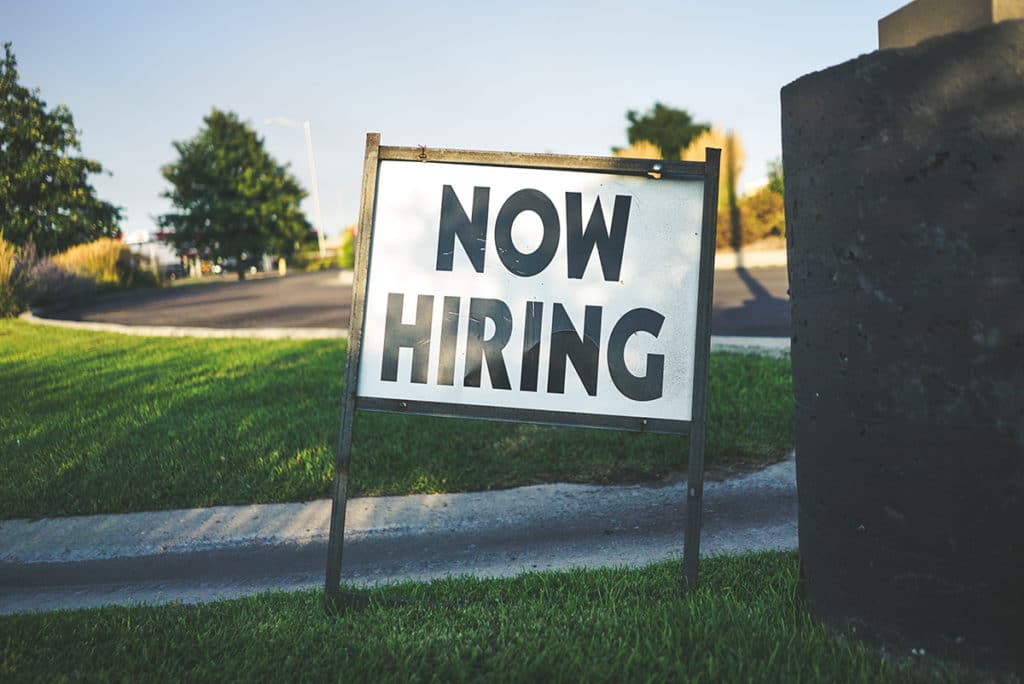
Add a title to your Resume
The CV title will allow the employer to quickly identify which position you are applying for. Write the position offered in the title of your resume. For example: – Barista Position – Waiter Position – Manager Position – Farm Hand.
Tailor your resume to the job
In fact, depending on the job for which you are applying, your experiences, degrees, passions, etc. must be revised to be in line with the job. Your CV must be targeted ! Don’t include information that doesn’t add value or is not relevant to the job you’re applying for.
For example, if you are looking for a job in construction but do not have the experience, highlight your DIY skills, your personal DIY-related experiences. If you are looking for a sales job and have never had one before, highlight your past customer relationships as a waitress or in admin.
Digital Literacy
In today’s job market, being tech-savvy is a must. Include your proficiency in software like Microsoft Office, digital marketing tools, or any industry-specific software.
Visual Appeal and Readability
As for the layout and the visual aspect of your CV, a word of advice: go for the simplest option . Avoid overly extravagant colours and layouts. The content is much more important than the format. Australians prefer a clean and clear CV. Use a professional and readable font . Keep the size consistent, usually between 10 and 12 points.
There are many free tools online to help you create your Australian resume. Many platforms offer simple and beautiful CV templates. You can fill them out free online then download them. CVDesignR and Canva are good options.
Ensure your resume is clearly laid out , with headings and bullet points to facilitate easy reading. Avoid large blocks of text.
Print your resume
Make sure to print quite a few resumes (20-30) to hand in to places in person . You will probably want to modify your CV as time goes on, so it does not make sense to print many more. In most cities, you will find a store called Office Works . They offer attractive rates for printing (from $0.08 per copy). Otherwise, you have the option to go to your local library . The problem with this is that sometimes it is necessary to buy a card to recharge with a minimum amount in dollars, so you end up paying more.
Do not print too many copies at once. You may not distribute them all, or you may want or need to make some changes to it over time to bring it up to date.
If you want to print a few copies, between 1 and 3, ask to have your prints done at your youth hostel, at a travel agency for backpackers or at a shop that does photo development. It will cost you less.
Hand out your resume personally
Try to walk around and hand out your CV directly to employers if you are searching for work in restaurants, bars, shops etc. Do not hesitate to ask to speak to the manager – this will allow you to meet your potential future employer and make more of an impression. First impressions are important. Wear clean and professional clothes. Avoid applying in a restaurant dressed in shorts, flip-flops etc. Sometimes handing your CV to a manager can turn into a job interview on the spot , so be prepared.
- Use Australian English spelling .
- Typos and grammatical errors . Proofread your resume multiple times or have someone else review it.
- If you’re from overseas, clarify your work rights in Australia.
- Be honest. Australian employers value integrity and straightforwardness.

Your resume is your ticket to the Australian job market. Use this guide to showcase your skills and experiences effectively. Remember, a well-crafted resume opens doors to exciting career opportunities in Australia.
RELATED ARTICLES MORE FROM AUTHOR

Working in the Construction Industry in Australia: A Lucrative opportunity for Backpackers

Obtaining a White Card for Construction Work in Australia

Get your RSA Certificate in NSW in 2024
That is worth reading!
very informative wow
LEAVE A REPLY Cancel reply
Save my name, email, and website in this browser for the next time I comment.

LATEST ARTICLES

Working in the Construction Industry in Australia: A Lucrative opportunity for...

Travellers Autobarn Promo Code 2025 – Cheap Campervan Rentals
- Terms of Use
- GDPR – Privacy Policy

Australian Resume - Guide & Formatting Tips [Free Templates!]

Every country has its own work culture and that means specific requirements when it comes to resumes and CVs.
And Australia is no different.
If you’re doing some Aussie job-searching (or planning to do so), you probably have a few questions:
What do “resume” and “CV” refer to in Australia? Are there any formatting rules you should be aware of? How long does the resume have to be? Should you include your photo?
Well, you’re in the right place.
We’re here to answer those questions and more!
In this article, you’re going to find everything you need to know about Australian resumes and how to prepare one.
What Makes Australian Resumes Different
- Typical Australian Resume Sections
3 Free Australian Resume Templates
How to make a convincing resume - further readings.
Let’s get to it!

We recommend creating your Australian resume in parallel with reading this guide. Just pick a template that you like, and get started.
Not sure where to look for a job in Australia? SEEK and CareerOne are some of the most popular job boards in the country.
Although it might appear similar to the U.S. resume format at first glance, the Australian resume differs in some details that if missed, might very well ruin your chances of getting a call-back.
Don’t worry though, we’re going to cover all of those details starting with the elephant in the room:
#1. Australian Resume vs CV
Unlike the U.S., in Australia, the terms “resume” and “CV” are used to refer to the same document . You will most likely come across “resume” more often, but if not, know that the terms are synonymous with each other.
#2. How long should an Australian resume be?
In the U.S., a resume should typically be one page .
An Australian resume, however, should definitely be more than one page. If you are a professional, three to four pages are what’s expected. If you are a recent graduate or don’t have much experience in the field, two pages will be enough .
Don’t forget to be to-the-point, though. Even though you have the freedom to present yourself with a lengthy resume, you shouldn’t get into unnecessary details.
If you have a lot of years of experience, you shouldn’t go more than 10 years back in your resume. If there are any earlier work experiences that you particularly want to mention, you can add a “other professional experience” section and briefly mention it there. You can also end the section with “Full resume available upon request.”
#3. Are there any language expectations for Australian resumes?
As a matter of fact, there are. If you're applying for a job in Australia you need to make sure that your resume is written in correct Australian english.
#4. Do you include a photo in an Australian resume?
Unless you’re applying for a job that is related to your appearance (modeling or acting), it’s best to not include a photo in your resume. If the company wants you to include one, they will usually specify it beforehand.
There are some countries, like Belgium, France, and Germany, where you should include a photo in your resume . This rule, however, doesn’t apply to Australia.
#5. What personal information should you include in an Australian resume?
Just like your photo, personal information can make you vulnerable to profiling based on gender, race, age, or appearance. To avoid that, provide only the necessary contact information like name, address, phone number, and email address.
It’s actually illegal for employers in Australia to ask you for information like age, marital status, religion, sexual preference, or nationality.
6 Typical Australian Resume Sections
Now that we’ve gone over what makes an Australian resume different, let’s focus on its layout and format.
An Australian resume typically has the following sections:
Resume Objective/Summary
Although it isn’t mandatory, it is recommended for you to include a resume objective or summary.
A resume objective (or career objective) states your goals for employment and what you aim for in your career. It’s 1-2 sentences and is great for recent graduates or people who are changing careers.
- Recent computer science graduate seeking a full-time position as a programmer. Strong knowledge of object-oriented programming and application development tools.
A resume summary (or career summary) highlights your professional experience and gives the employer a glimpse of your skills before reading about them further in your resume. It’s between 3-5 sentences and is great for job seekers with years of experience.
- Driven programmer with 8+ years of experience developing and maintaining enterprise software applications. Helped design and develop 3 successful applications over the past 5 years.
Work Experience
Your work experience should be displayed in a reverse-chronological order . With each entry, you should provide the start and end date along with a brief description of your experience, your responsibilities, and your achievements.
When possible, quantify your achievements and responsibilities. This shows the recruiter how you stand out from the rest of the applicants:
Marketing Manager
Achievements/Tasks
- Launched social media campaigns for the company
- Managed a large team
07/2018 - Present
Achievements
- Developed and launched promotional campaigns that increased sales revenue by 12%
- Trained and managed over 15 marketing and sales specialists, making sure sales targets were always met.
If there are any gaps in your employment history, you should account for them as well if possible. Chances are, your interviewer will ask you about it anyway.
If you have work experience in a large company/institution in your country that an Australian recruiter might not be familiar with, you should provide some information on your employer as well.
For example, if you have worked as a sales manager for one of the largest toy companies in your country, don’t be hesitant to provide that information. By simply stating the name of the company you risk downplaying your experience if the recruiter isn’t familiar with the company.
Your education history should also be displayed in reverse-chronological order. Each entry should consist of the name of the institution, date attended, your major/minor/specialization, and any related honors or awards.
BA in Economics
Bentley University
07/2017 - 05/2021
- Dean’s List 2019, 2020, 2021
- Member of the Investment Club
A simple list of skills and strengths will provide the employer with a quick snapshot of what you have to offer and what you excel at. In general, it’s best to focus on hard skills, but if you will be listing any soft skills like “leadership” or “critical thinking”, make sure you can back them up with experiences.

Volunteer Experience
If you have any volunteer experience , it’s important to note it on your resume. Hiring managers appreciate it.
Often, volunteer experience can count as work experience too. Especially if it matches with a period of time you were not employed and if it is related to your profession. In that case, you can even include it in the “work experience” section.
The name, position, and phone number of your referee/s will be enough. Most recruiters contact references after the interview process anyway.

If you want to create a resume that stands out, you’ll need to use a good-looking template.
#1. College/University Resume Template

As a student or recent graduate, you want your resume to highlight your education and emphasize your skills. This is exactly what the College resume format does.
It has a simple and organized format that is easy to skim and has a nice aesthetic.
#2. Professional Resume Template

Approved by various recruiters and one of our all-time favorite templates, the Professional template can adapt to all fields.
It highlights your work experience and makes all information easy to find for the recruiter.
#3. Creative Resume Template

If you have a career in marketing, design, advertising, or other creative fields, this is the perfect template for you.
The Creative resume template is compact and organized but has some details that add to it a unique touch, fit for the industry you are in.
At this point, we’ve got you all covered on Australian resumes, what they look like, and how they differ from resumes in other countries.
However, there’s always room for improving and perfecting your resume and job-searching process.
Check out some of our top resources on job-search, resumes, and the interviewing process and be on top of your game in all steps:
- The No-Nonsense Guide to Finding a Great Aussie Job in 2024 - This guide is as good as it sounds. You’ll find all you need to know about the job-finding process in Australia.
- How to Write a Resume | Professional Guide - Everything you need to know about how to make a resume, from layout to content.
- How to Write a CV (Curriculum Vitae) in 2024 - The A to Z guide to the perfect CV that will land you that interview.
- 35+ Common Interview Questions and Answers [Complete List] - Leave nothing to chance and ace that interview by learning how to answer these unavoidable questions.
- How to Ace Interviews with the STAR Method - The key to giving a good answer to every single behavioral job interview question.
Looking for more? Head over to our career blog and find all the information you need.
Key Takeaways
The differences of an Australian resume may be subtle, but if you don’t pay attention to them, you probably aren’t getting any callbacks.
To avoid that, when preparing your Australian resume remember:
- In Australia, “resume” and “CV” refer to the same document.
- You can and MUST go longer than one page. 3-5 pages is ideal, but 2 pages can be acceptable if you don't have a lot of experience.
- Your resume has to be written using correct Australian English so always double-check that your spelling is right
- It is highly recommended to include an attention grabbing-resume objective or summary that will make the recruiter intrigued to read further
And that’s a wrap!
Good luck and wish you a successful job-search!

To provide a safer experience, the best content and great communication, we use cookies. Learn how we use them for non-authenticated users.
How To Write An Australian Resume: A Step-By-Step Guide For 2024
Write a resume that impresses Australian employers.
(138 votes, average: 4.5 out of 5)
Contributing Editor | HR, careers & job search
I founded three separate companies over the past decade to help leaders and organisations do their best work. Arielle Executive helps leaders get noticed while Arielle Partners & Talent Avenue connect organisations to Australia's best leadership talent.
Last updated: March 17th, 2024
Skip to section
The internet is full of guides that teach you how to write a resume for the Australian job market. Unfortunately, most of them are written by online resume builder companies with a vested interest in making you sign up for their platforms rather than making it easy for you to write a resume.
This resume writing guide is different – because, as 2024, I’ve personally trained over 50 resume writers to write excellent resumes that Australian recruiters love.
With this wealth of experience, I can also teach you how to write your resume. It’s easier than you think.
How To Write An Australian Resume in 8 Easy Steps:
- Learn the purpose of each resume section.
- Prepare to write.
- Decide on resume format and template.
- Create the resume header (your name, etc).
- Write the Key Skills section.
- Write the Employment History section.
- Fill out peripheral sections (education, etc).
- Write your Profile last.
I’ll also share a bonus trick that professional resume writers use to cut the amount of time it takes to write a resume by 50%.
Of course, you can avoid having to write a resume altogether by outsourcing the job to a good resume writer, or using a good resume builder.
Here are my recommendations:
- free resume builder , if you’re on a budget.
- best CV service , if you’re a mid-career professional.
- executive resume writing service , if you’re a senior leader.
Step 1: Learn The Purpose Of Each Resume Section.
Let me familiarise you with the essential elements of an Australian resume. I’ll show you what you must include in each section – and what you should exclude.
If you’ve written resumes before, feel free to skip this step.
Headline. A catchy one-liner that highlights your value as a candidate. Targeted to a specific role, it must pull in aspects of your desired job title, current skills, industry and keywords in the job ad.
Contact Information. Includes your Australian phone number, professional email address, address and LinkedIn profile URL.
Profile: A story-driven elevator pitch that showcases your skills, achievements, and experience. Don’t confuse this with a resume objective or a personal objective.
Employment Summary [Optional]. Gives the hiring manager a preview of your experience and encourages them to keep reading. Use it only if you have more than 3 roles under your belt.
Key Skills / Assets . Includes a combination of your hard and soft skills. Use either bullet form or short, punchy sentences.
Professional Experience. Presents your work history in reverse chronological order. Offers insight into mandates, responsibilities and achievements.
Earlier Career History [Optional]. Gives you the flexibility to list distant roles. If some of your work history falls outside of a 15-year window, put it here.
Education & Additional Sections. Lists your university degrees, certifications and courses.
Step 2: Prepare Yourself.
Preparation is a key part of learning how to write a resume. Strategy before tactics, as they say. Measure twice, cut once.
A. Pick Your Target Role.
A resume is a marketing document, not a historical record of your career. Its content will change depending on the role you decide to apply for.
This means you must narrow the list of jobs you’d like to apply for to one.
One dream job.
This will enable you to achieve maximum cut-through by targeting specific pain points of hiring managers on your resume.
Expert Tip.
If you’d like to target more than one role, you’ll need to create a resume for each one.
B. Know The Purpose Of Your Resume.
Your resume is a tool that demonstrates:
- Why you’re a fit for the job.
- How you’re different to 50 other similarly qualified candidates who sent in their resumes in response to the same job ad.
The second point is critical. There’s not much value in demonstrating that you can do the job if you can’t set yourself apart from your competition.
Your resume must clearly articulate how you’re uniquely able to solve a specific set of commercial challenges – and why you should be hired over similarly qualified candidates.
Unfortunately, most resume writing guides focus on the first point and miss the second one entirely. (This article focuses on both).

C. Study The Job Description.
We all get over-ambitious at times. Put on your hiring manager hat, read the job description and ask yourself:
- Am I a fit for the role?
- Can I see any experience gaps?
If you’re unsure, read the job ad again. Does it mention:
- Budget sizes that you haven’t managed?
- Team sizes that you haven’t led?
- Credentials that you don’t have?
- Years of experience that you haven’t yet attained?
Be honest with yourself. There’s a fine line between being ambitious and being foolish.
You’ll be competing against dozens of supremely qualified job seekers, so there’s little value in applying for roles you’re not a fit for.
You’ll simply be wasting your time and burning bridges.
(Related: How To Write A Cover Letter In Australia ).
D. Create An Outline.
Grab a piece of paper (or open a new Word document). Write down your:
- Employment dates in the last 15 years.
- Job titles.
- Mandates (i.e., were there specific reasons you were brought on?).
- Primary responsibility in each role. If you were responsible for projects, provide a quick summary of those.
- Top 3 accomplishments in each of your roles.
Last, reflect on the themes and values that underpin your work.
E. Block Off Time In Your Calendar.
Don’t try to write your Australian resume on the fly.
Surgery waiting rooms, hotel lobbies, train stations and childcare centres are not suitable environments for selling your best self in written form.
- Allocate 3 X 3-hour sessions towards writing your resume. Yes, nine hours in total.
- Block off these times in your calendar. Don’t treat them as poor cousin appointments that get pushed around by other stuff. Your career is on the line. Treat it with the respect it deserves.
F. Tame Your Inner Perfectionist .
Get your thoughts out first and polish them later.
You don’t have to write a perfect resume, one sentence at a time. It’s much easier to create a rough first draft and improve it.
Remember – excellent writing is rewriting.
G. Aim For Correct Length.
A lot of online resume builders advise you to limit your resume to one page in length.
This is nonsense in the context of the Australian job market – unless you’re writing a networking resume or a bio.
How long your resume should be will be determined primarily by your level of seniority. Use this as a rule of thumb:
- Graduates and interns : 1 page
- Junior managers and young professionals: 2 pages
- Middle managers and professionals: 3 pages
- Senior managers and executives: 3-5 pages
Step 3: Choose A Great Resume Template.
Don’t build your resume layout from scratch. There’s nothing worse than staring at an empty Word document with a blinking cursor or trying to design your own resume template.
It never ends well – trust me.
Give yourself a head start by downloading one of many free resume templates on the Internet or by using a resume builder.
Alternatively, download my free resume templates below:
Template 1: Download Now .
Template 2: Download Now .
Template 3: Download Now .
When browsing resume templates, look for those with contemporary, clean, easy-on-the-eyes designs .
- Avoid old-school resume templates that make your resume look like it’s stuck in the 1990s.
- Choose designs that control the user experience and tell the hiring manager which elements to look at first. If a resume design doesn’t have a clear visual hierarchy , it will appear dense, confusing and “too much hard work”.
For this reason, stay away from two-column layouts. They often fail at presenting content in a visually hierarchical manner.
Notice, for example, how the resume example below dumps all of the information in front of you. The resume content isn’t easily skimmable and does not feel inviting to read:
Step 4: Decide On The Right Resume Format.
There are three resume formats: reverse chronological, functional, and combination.
Let me make this decision very easy for you:
- Use reverse chronological resume format if you have more than 1 role.
- Use functional resume format if you have no work experience (i.e., you’re a graduate).
- Don’t use the combination resume format , ever.
The reverse chronological resume format is best suited for professionals, managers and executives – because it puts a big spotlight on your most recent (and therefore important) roles.
It also gives employers an excellent overview of your career progression.
The functional resume format is best suited for graduates because it takes attention away from your most significant weakness – that you don’t have an employment history.
Instead, it highlights your strengths – academic achievements, transferable skills, communication skills and extra-curricular activities .
Step 5: Write A Killer Headline.
It’s time to start writing your resume.
Kick it off with a snappy headline that echoes the role you’re seeking, acknowledges your current job title and is buoyed by relevant skills, specialisations or achievements.
The headline should live in the resume header, right next to your name.
For example:
It’s immediately apparent that the person is Chief Financial Officer, operates in the Climate Technology space and has something to do with IPOs.
Here are a few other examples:
- Financial Controller | CPA | FP&A
- Sales Representative | Forex | Hedging
- Senior Supply Chain Manager | Planning & Execution
- IT Program Manager | CSM | PMP
- Executive Sales Director | Acquisition & Business Development
If you get stuck, refer back to the job ad and the position description. Ask yourself – what is their main pain point? Craft a headline that appears as an antidote.
Step 6: Enter Your Contact Details.
This section is self-explanatory, but let me provide a few critical nuances.
- Your Name. Use the [Firstname] [Lastname] format.
- Phone Number. Your mobile is fine. Include your country area code if applying internationally.
- LinkedIn URL. Did you know that you can change the default, ugly and long URL that LinkedIn gave you by default to one that’s simple, short and attractive? Here’s how to do it .
- Address. Some job seekers prefer to reveal their city and country; others list their full residential address. It’s up to you.
- Email Address . Ensure that it looks professional, and ideally, include at least one of your names. You could also consider purchasing a domain resembling your name and hosting your email address. ( Here’s how to do it ).
- Do Not Include your DOB, gender, marital status or photograph (read the full list of items that you shouldn’t include ).
Step 7: Write A (Very Basic) Profile.
Here’s a secret that only professional resume writers know about. If you use it, you’ll write your resume in 1/2 of the time.
Writing will be easier once you become more familiar with your commercial value. This usually happens after you detail your professional experience.
For now, I only want you to write a skeleton profile. List 5-10 bullet points that mention your:
- Significant achievements (e.g., you exceeded sales targets by 14% in Q3 2021).
- Major strengths (e.g., you’re highly analytical, can work under pressure).
- Educational milestones (e.g., an MBA, PMP, Agile, Scrum).
- Business impact (e.g., your work leads to a reduction in overhead costs, improved customer satisfaction, increased revenue).
Later, you’ll expand on these bullet points to create an impressive, fully-fledged Profile .
Step 8: Create The Key Skills (aka Key Assets) Section.
You must follow two golden rules when writing your skills section:
- Be relevant to the job you’re applying for
- Echo keywords from the target job ad
Let me show you how this works in real life.
This morning, I grabbed the job ad below from Australia’s favourite job site, Seek.
I’ve highlighted all keywords that jumped out at me as possible candidates for the Key Skills / Assets section:
This particular job ad was nice enough to offer a dedicated “Skills and Experience” section that I could draw on to grab the following:
- Excellent written and communication skills
- Deep understanding of financial markets across FX, crypto, commodities, energy and equities
- RG146 Certification
- Tertiary degree in Business or similar
- Existing network
- BDM or account management experience
First, notice that many of these requirements are not skills per see.
This employer wants to interview candidates who, besides having communication (soft) and finance (hard) skills, are tertiary qualified, certified finance professionals with plenty of connections and experience.
This is why I prefer to expand the purpose of this section to “Key Assets” rather than simply “Key Skills”.
By removing this constraint, you give yourself the freedom to present more of the exact attributes that the employer is looking for.
By the way, not all job ads will be kind enough to provide you with a dedicated skills section to draw on. Most of the time, you’ll need to scour the body of the ad itself for hints.
For example, the job ad above tells us that interested job seekers must have the ability to:
- Nurture warm, interested leads
- Develop existing client relationships
- Work with High Net Worth (HNW) individuals
- Provide insights on financial markets
Now that I’ve pulled those out, I’ll shape them into 3-5 assets that lead with a keyword and follow it with evidence. Here we go:
- Strong Results Focus. Experienced BDM with a proven ability to exceed targets in fast-paced, high-pressure sales environments by developing warm business leads and expanding existing accounts.
- Written and Communication Skills. Take complex and technical financial information and present it as actionable insights to clients and leadership teams.
- Stakeholder Management Skills. Success in establishing and developing strategic relationships with senior stakeholders, including HNW individuals, and influencing investing decisions.
- Degree Qualified ASIC Certified. Holding an MA (Business) from Sydney University and an Advanced Diploma in RG146 from TAFE NSW.
By the way, what’s the difference between hard skills and soft skills ?
- Hard skills are technical. They can be measured and are directly related to your tasks (e.g., MySQL, Agile).
- Soft skills are personal. They are intangible and point to your intrinsic attributes (e.g., leadership skills, stakeholder management skills).
Step 9: Write Your Professional History.
Do not include every single role that you’ve had since university. Your job is to highlight, not list everything.
Here’s a guideline that will help you cull the chaff:
- Include between three and six of the most recent and relevant roles from the past 10 to 15 years.
- List remaining roles in an “Additional Work History” section that includes titles, organisations and tenure (I’ll show you how to do this later).
Once you’ve selected your roles, start listing them in reverse chronological order.
Your formatting of each role should look like this:
Notice how the section starts with very broad, high-level, strategic details to set the context, then drills into very tactical, high-resolution stuff to showcase the impact of your work.
The steps below show you how to write a resume just like that.
A. Enter Job Title And Dates.
Make sure these are correct. Do not stretch truths to cover up career gaps. You will get caught, and it will cost you dearly.
B. Spotlight The Company.
Write an employer snapshot. Keep it short (2-3 lines maximum) and provide insight into company size, history and industry. Here are a few examples.
International design house:
Medium-size private company:
Australian government:
Don’t copy and paste from the ‘About Us’ section of the employers’ websites. You’ll infect your resume with meaningless corporate fluff.
C. Spotlight Your Role.
Why were you hired? What commercial context existed around your role? Who were you reporting to?
This is another opportunity to set some strategic context, this time focusing on your role. Here are some ideas to guide you:
D. List Your Responsibilities.
Quite simply – were you hired?
Kick off each bullet point with an action verb like “provided”, “determined”, or “forged”. When describing a role you’re presently in, remember to use the present tense.
Here are a few examples of responsibilities to guide you:
Never kick off responsibility with “Was responsible for…” It sounds weak and vague.
E. Showcase Your Achievements.
This is the most important part of your resume.
You really must read my guide to writing achievements that land jobs , but for now, let me give you a few important pointers.
An eye-tracking study undertaken by usability research pioneer Dr Jakob Nielsen found that the dominant reading pattern online looks like the letter ‘F’:
This means you must kick off each bullet point with an action verb and the result, rather than the action you took.
For example, compare this:
See the difference? The secret to front-loading your achievements lies in this 3-step formula:
You can use it to convert this boring achievement:
Into this attention-grabbing one:
Here’s another example of an achievement pre-transformation:
Step 10: Fill Out Peripheral Sections.
These sections offer evidence of your suitability for the role and make your resume easy to navigate.
A. Employment Summary.
Think of it as a mini table of contents for your work history. Provide only job titles, dates and employer names, like this:
B. Additional Career History.
As mentioned earlier, roles that aren’t relevant enough to make the cut for the Professional Experience section should live in this dedicated section on the last page of the resume:
C. Education and Professional Development
Lump all of your education, training (including courses you’ve done internally at work) and certifications under this umbrella:
If you have awards, honours and publications, put them into the Achievements sections of individual roles, where they’re more likely to be seen.
Step 11: Finish Your Profile.
Now that you’re familiar with the details of your work history, let’s finish off that Profile .
Your Profile is the elevator pitch of your brand. It needs to be relatable, specific to you and commercial in nature.
But first, a few ground rules to make sure you don’t waste time and end up with a great resume:
- Write in the first person. (Unless you happen to be the Queen).
- Avoid buzzwords and cliches such as “ detail-oriented”, “results-driven”, “strategic thinker”, “team player”. ( List of buzzwords to avoid ).
A. Profile, Resume Summary Or Resume Objective?
This gets confusing, but it doesn’t have to be.
- Profile and Resume Summary are sometimes used interchangeably, especially in the American job market.
They usually refer to the same thing, but I suggest that you DON’T think of this section as a Resume Summary – because its purpose is not to summarise but to sell.
It’s a sales pitch.
Keep its purpose to a higher standard, and you’ll write a more compelling resume.
- A Resume Objective , sometimes called a Career Statement (or simply an Objective) , is a 3-4 sentence summary of your employment goals, values and strengths.
Back in the 1990s, it was fashionable for all resumes to sport a Resume Objective .
These days, it’s considered old-fashioned and only belongs on resumes of recent school leavers and graduates who don’t yet have much of a career history to showcase.
As a rule of thumb, if you have any work experience, go with a Profile . If not, go with an Objective .
Let’s break it down.
B. How To Write A Profile.
Start by making a list of your specialisation points, most impressive achievements and points of difference.
- Specialisations are your friend. The narrower, the better (e.g., you’re a business analyst known for your work in the Australian cryptocurrency space).
- Highlight quantifiable stretches of experience (e.g., you offer 15 years of success in leading and shaping teams).
- Pinpoint for career-defining, quantifiable achievements where you exceeded expectations, preferably in the last few years (e.g., you turned around the fortunes of a poorly performing business).
- Unique intersections are your friend. These act as points of difference to set you apart from similarly qualified candidates (e.g., you’re a marketer with a military background, which means you bring an unusual sense of rigour to the profession).
Shape this data into 2-3 paragraphs that contain your most significant professional selling points.
Here is an example of a profile that has the power to beat the resumes of all the other applicants:
And here are a few more lines you can use as inspiration for your own resume:
C. How To Write A Resume Objective.
Start by making a list of your strongest attributes. Think about your:
- Strengths (e.g., conscientiousness, attention to detail, perseverance)
- Relevant skills (e.g., research skills)
- Volunteering experience (e.g., work with NGOs, political parties)
- Education milestones (e.g., graduations)
- Awards and distinctions (e.g., GPA scores, scholarships)
Next, think about how you will be able to contribute to your target organisation.
Finally, shape this raw data into a short, punchy paragraph. Here are a couple of Resume Objective examples that you can use for inspiration:
Step 12: Run It Through An ATS Simulator.
An ATS, or an Applicant Tracking System , is an automated scanner designed to streamline the recruitment process.
This gatekeeper between you and your dream job works by filtering out resumes that don’t meet the criteria listed in the job description.
The good news is that ATS simulators allow you to pre-empt its results.
They scan your resume (often for free or for a minimal cost) and provide instant feedback on its ability to pass through the tracking systems:
Your goal is to aim for a score of 80% and above. Good simulators like JobScan will show you precisely what you need to change to improve your score.
Step 13: Proofread, Tweak, Re-Tweak.
Your own typos become invisible to you after a short while. Don’t trust your eyes to eliminate all errors from your resume.
- Use an AI language checker like Grammarly . Apart from picking up spelling mistakes that you’ve missed, it will provide pointers for improving the readability and engagement of your resume.
- Ask a couple of your friends to proofread it. They’ll pick up things that both you and Grammarly missed, but take their feedback with a pinch of salt. Everyone will have an opinion, but not everyone will have a good one.
Step 14: Save It Well.
I often see Australian resumes with filenames that have the power to derail one’s job search and turn off the hiring manager.
- CV – not helpful for filing/finding
- Ann_Draft_CV / CV Draft – Doesn’t suggest much effort in preparation
- John_Sales_Only_Resume – Could suggest a second sector choice
- Alex_2006 – Looks like your resume hasn’t been updated since WWI (or thereabouts)
First impressions count. You’ve just spent an hour learning how to write a resume. Don’t jeopardise your chances with a minor detail like this.
Keep it simple, for example:
- Goodwin_James or Goodwin_James_[company/recruiter name]
5 Resume Mistakes That Australian Job Seekers Need To Stop Making.
An effective resume is more than a mish-mash of your previous roles and buzzwords.
- 1. Cliches and Bloat. In other words, your resume should never say that you’ve “ managed a team of 15 analysts at KPMG for 10 years ” and claim that you’re “ a highly motivated self-starter “.
- 2. Poor Attention To Detail. There’s no excuse for having a resume with typos, misspellings and grammatical errors.
- 3. Weak Targeting. One resume should target one role. Don’t try to sit on more than one chair with your one butt.
- 4. Poor Design. Your resume must look as good as it reads.
- 5. Weak Achievements. Most people confuse achievements with responsibilities. A responsibility describes what you did, and an achievement describes how well you did it.
Final Takeaway For A Perfect Australian Resume.
Writing an effective resume takes time – and many iterations.
As with most things in life, it’s possible to take shortcuts, but these tend to come back and haunt you – through lost job opportunities and rejection letters.
The passion you have for your work and your ability to deliver tangible value should shine through in every word of your resume.
My advice? Don’t try to wing it.
Once you’ve learned how to write a resume, you’ll be able to sell yourself to employers every time you need a new job.
Take my advice and beware of those painfully generic professional resume writers whose services abound these days.
If I were one of them, I might sum up this article with a tired old adage: “ you can write the perfect resume by telling, not selling.”
But since we’re all originals here, I’ll close with a Hopi proverb:
“Those who tell the stories rule the world.”
P.S. Do you have more thoughts on how to write an Australian resume? Any tips that you’ve found particularly helpful? Share in the comments below and let’s start a conversation!
How useful was this post?
Click on a star to rate it!
Recommended Reading:
- Showcase Strong Stakeholder Management Skills On Your Resume (With Examples)
- Showcase Strong Team Management Skills On Your Resume (With Examples)
- How To Showcase Strong Analytical Skills On Your Resume (With Examples)
Career Development
- 5 Signs Of Burnout At Work (That You Should Take Seriously)
- Farewell Message To A Colleague: 40 Best Examples
- How To Ask For A Pay Rise [And Get It]
- Australian Formal Letter Format Example (With Writing Tips)
Job Hunting
- What Is The Minimum Wage In Australia?
- 40+ Best Job Sites In Australia For 2024
- Follow-Up Email After An Interview: Guide & Examples
- The Great Resignation: Given Way To The Big Stay?
- How To Get A Job In The Australian Mines?
Resume & LinkedIn Advice
- How To List Budget Management Skills On Your Resume
- How To Indicate Availability In Your Resume
Leave a Reply Cancel Reply
Your email address will not be published. Required fields are marked *
You may use these HTML tags and attributes:
Save my name, email, and website in this browser for the next time I comment.

How to Prepare an Australian CV: The Complete Guide

Written by Nicole Wren
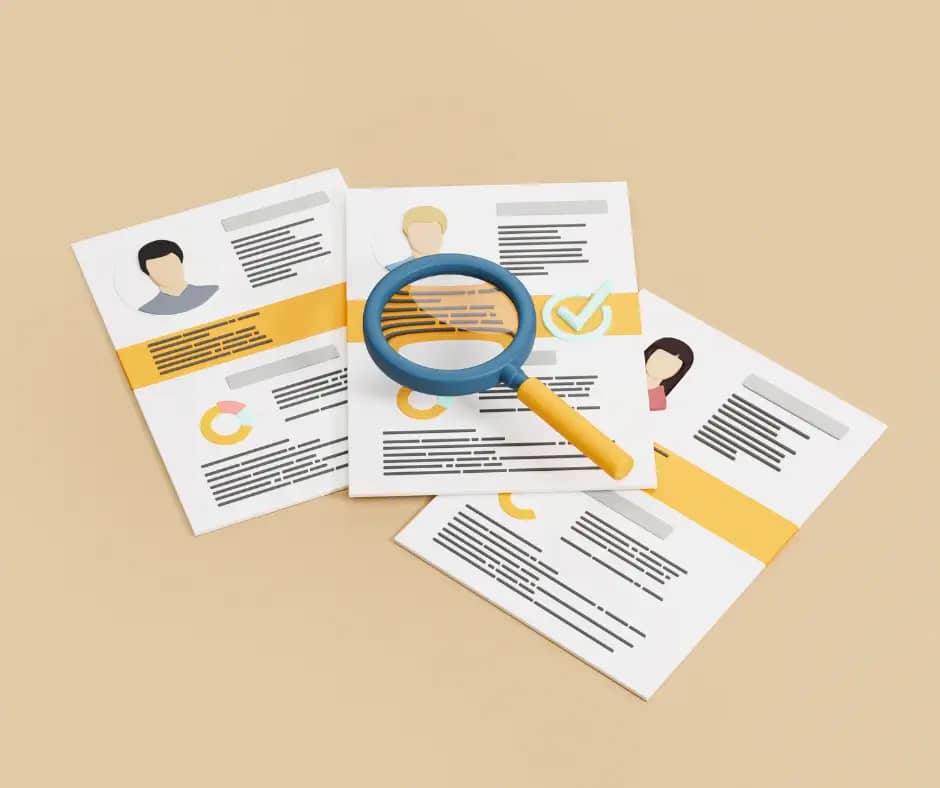
- Is it 'CV' or 'Resume' in Australia?
Australian CV Style and Length
Personal details, profile and key skills, awards and distinctions, education and qualifications, employment experience and achievements, volunteer roles, what to avoid in your australian cv, australian cv writing services, cv xyz method, cv keywords and applicant tracking systems (ats), cover letter writing.
by Nicole Wren | Apr 22, 2024 | Writing Advice
If you’re new to Australia and about to start job hunting, understanding the ins and outs of the Australian CV style and format is essential. You probably already know that Australia differs from other countries in terms of CV expectations. In this ultimate guide, we’ll walk you through everything you need to know about creating a winning Australian CV tailored specifically for the unique requirements of the Australian job market.
Is it ‘CV’ or ‘Resume’ in Australia?
A CV, short for Curriculum Vitae, is a detailed document outlining an individual’s educational background, work experience, skills, achievements, and other relevant information. In Australia, the term ‘CV’ is often used interchangeably with the term ‘resume’. In this article, we’ll discuss it in that context. However, there are some industries in Australia where a true ‘CV’ is required, such as academic positions at universities. True ‘CVs’ are expected to be longer and include more detailed information about a candidate’s experience.
In Australia, the expected length of your CV may differ depending on your industry and experience level. An early career resume should be 2 pages. An experienced professional may require 2-3 pages. A senior executive may need 3-5 pages. Few employers will expect a CV that is longer than this.
The preferred Australian CV style is usually reverse chronological. This is where you list all your employment experience, starting with your most recent roles. Likewise, you should list all of your qualifications, starting with your most recent.
Australian CV Format
Your Australian CV should include the following sections, in this order:
Include your name, phone number, email address and LinkedIn profile (if you have one). Include a summary job title e.g., Engineer or Customer Service Professional (make sure these fits with both your career history and the role you are applying for). If you are not yet located in Australia, and/or if all your employment experience is outside of Australia, mentioning your visa status will be important in this section, also. A secured visa will substantially enhance your job prospects.
You should mention some of your key skills, and what you are seeking in a role. Make sure these are relevant to the role you are applying for. Be careful about including any ‘fluff’ in this section, or generic skills. Australian employers prefer CVs which are concise and ‘to the point’.
Awards and distinctions can help you stand out amongst the competition. Arrange your awards and distinctions in reverse chronological order, starting with the most recent ones. For each award or distinction, provide relevant details such as the name of the award, the organisation or institution presenting the award and the date received. If an award might be unfamiliar to employers outside of a specific industry or context, briefly explain the significance of the award and why it’s relevant to your qualifications or accomplishments.
Detail all your relevant qualifications and education. Include where you obtained the qualifications (e.g. which university) and which year. Leave off qualifications that are irrelevant to the role, or very outdated. You can also list your driving licence and certifications in this section.
Detail your employment history in reverse chronological order. Discuss your achievements or accomplishments especially when they are relevant to the role you are applying for. For example, if you are applying for a project management role that requires experience in project management methodologies, highlight achievements relevant to this. You should use bullet points. Try to incorporate some achievements that demonstrate your soft skills, too. Australian employers place a high value on ‘cultural fit’ within an organisation. Soft skills like communication, teamwork and collaboration will help demonstrate to employers that you will be a good fit for their organisation, even if you may lack certain technical skills.
Include any relevant volunteer roles or community engagement. For example, a finance officer may mention volunteer work as a treasurer of a school committee. Volunteer work can also further emphasise your soft skills, and potential cultural fit within an organisation.
In an Australian CV, you should include two referees. Include their names, positions, organisations, and contact details.
When it comes to Australian CVs, there are a few things to keep in mind:
- Use Australian English (not American English as many word processing software systems use as their default). This means using the ‘s’ form instead of the ‘z’ form for many words e.g. organisation, not organization.
- Don’t include a photo, it’s simply not necessary in an Australian CV, unless you are applying for particular roles such as modelling or presenting where your looks are relevant.
- Avoid any employment gaps. Explain any times you’ve been out of employment, for example if you’ve been studying, travelling or caring for others, you should (briefly) document this.
- Each time you apply for a role, you should adjust your Australian CV to suit. This means reflecting the skills, experience and keywords that the job ad is calling for.
If you unsure about navigating the nuances of the Australian CV style and format on your own, you may wish to take advantage of the many Australian CV writing services. An effective CV writer will be able to highlight your unique skills and experiences effectively, whilst adhering to the required Australian CV format and style.
The CV XYZ Method is a method that many Australian employers prefer candidates to use to discuss their achievements. It stands for:
X: What was achieved?
Y: How was it measured?
Z: How was it achieved?
When writing your Australian CV, be sure to include relevant Applicant Tracking System (ATS) keywords. Put simply, this means incorporating the keywords used throughout the job ad within your CV. This will to increase your chances of passing through Applicant Tracking Systems (ATS) used by many Australian employers. Check out our in-depth guide to ATS keywords here.
While a CV is essential, a well-crafted cover letter can also significantly boost your job application. Your cover letter is where you should specifically address the requirements set out in the job ad, as well as explain your motivation for applying for a role.
We hope you’re now equipped with the knowledge and resources needed to craft an impressive Australian CV in the correct Australian format that will catch the attention of employers. We are on hand to assist if you have any further queries. Contact us for a chat!

Nicole Wren
Senior Writer
Nicole is the principal resume writer at Resumes to Impress. Nicole loves writing and sharing her knowledge about all things job hunting and career guidance.
Recommended Services:

Professional Resume and Cover Letter Service – Mid-Career
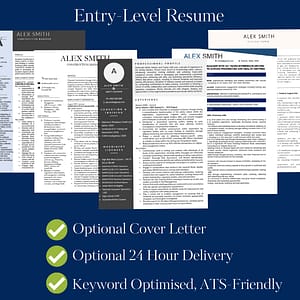
Entry Level Resume Writing Service
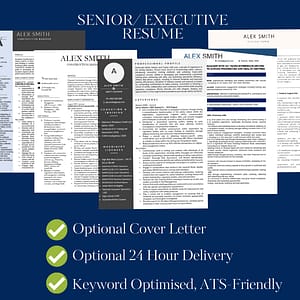
Senior Professional & Executive Resume Writing Service
- Adelaide Resume Writers
- Resume Writers Bendigo
- Resume Writing Service Brisbane
- Resume Writing Services Cairns
- Resume Writing Services Canberra
- Resume Writers Darwin
- Resume Writers Diamond Creek
- Resume Writing Services Geelong
- Resume Writing Services Gold Coast
- Hobart Resume Writers
- Resume Writers Launceston
- Resume Writers Mackay
- Melbourne Resume Writers
- Resume Writing Services Newcastle
- Resume Writers Parramatta
- Resume Writers Perth
- Resume Writers Sunshine Coast
- Resume Writers Toowoomba
- Resume Writing Services Townsville
- Resume Writers Wollongong
- Interview Coach
- LinkedIn Profile Writer
- Resume Writing Services For Veterans
- Mining Resume Writing Services
- Nurse Resume Service
- Professional IT Resume Writing Services
Australia CV Tips & Format Requirements
Applying for a job in Australia? This guide has the tips, examples, & format requirements needed to write the perfect Australian CV. Create your VisualCV today!
Australia CV Requirements
As with most countries, Australia has its own specific work culture and set of expectations for CVs. When applying for a job in Australia, it is important to ensure that your CV adheres to Australian CV requirements and is tailored to impress Australian recruiters and employers.
Browse our gallery of resume examples here.
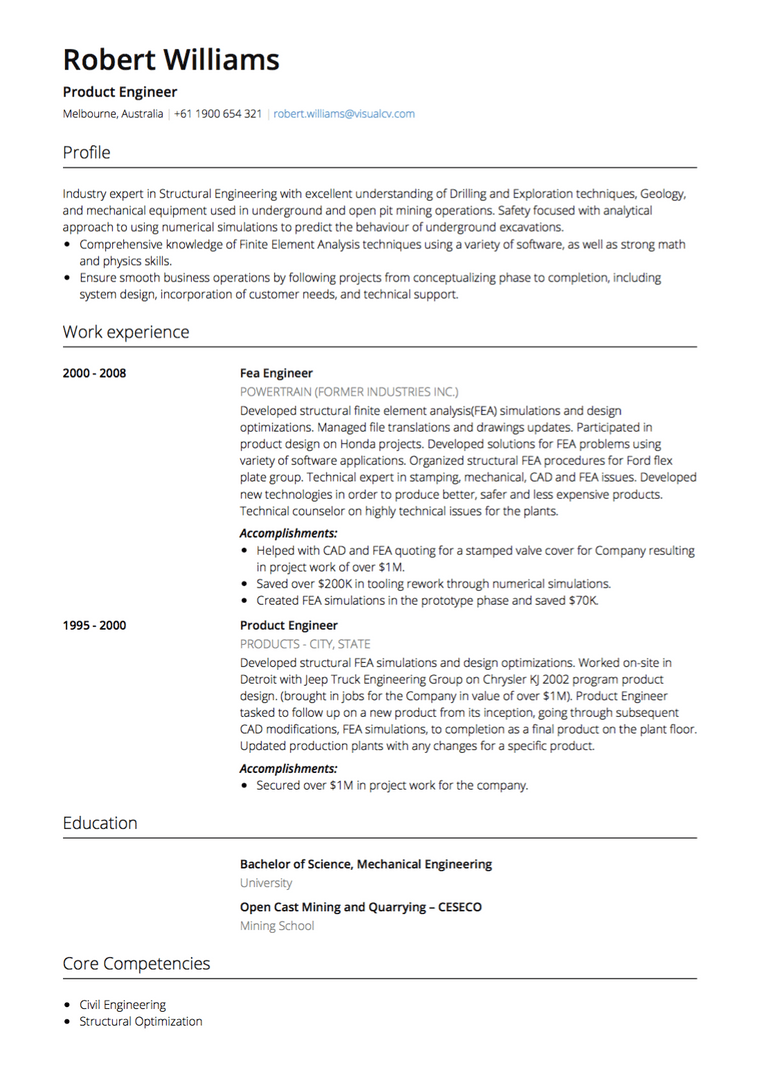
Australia CV Tips and Rules:
Australia CV Length: For experienced professionals, a three or four page resume is expected in Australia. If you are recently graduated or new to the workforce, two pages is sufficient, but as soon as your work history is robust enough for three to four pages, your resume should expand accordingly.
Australia CV Terminology: The terms ‘resume’ and ‘CV’ are used synonymously in Australia - they refer to the same document. The word ‘resume’ is used more commonly, however, so if in doubt, use that one.
Australia CV Language: When writing your resume, be sure to use correct Australian English - don’t forget those extra u’s, as in ‘colour’ and ‘labour’ (as opposed to the American spellings ‘color’ and ‘labor’).
Australia CV Format, Order and Layout:
Australia CV Photo: As a rule of thumb, it is best not to include a photo in your Australian CV. If you intend to host your resume online, or if you are in a creative industry where visuals are highly valued, then an image may be an asset. Be sure to do your research, however - if the company you are applying to isn’t expecting a photo, it can hurt your chances. As Australian HR and recruitment consultant Karalyn Brown says , “When you put your photo on your resume you are inviting a recruiter with their own set of prejudices, to consider how you look along with what you may have achieved.”
Australia CV Personal Information: The only personal information required for an Australian resume is your contact information - your name, address, phone number, mobile number and email address (which should be some variation of your name - keep it professional: [email protected] or something similar). Any other personal information such as age, marital status, and number of children is not relevant to your experience or job performance and should not be included.
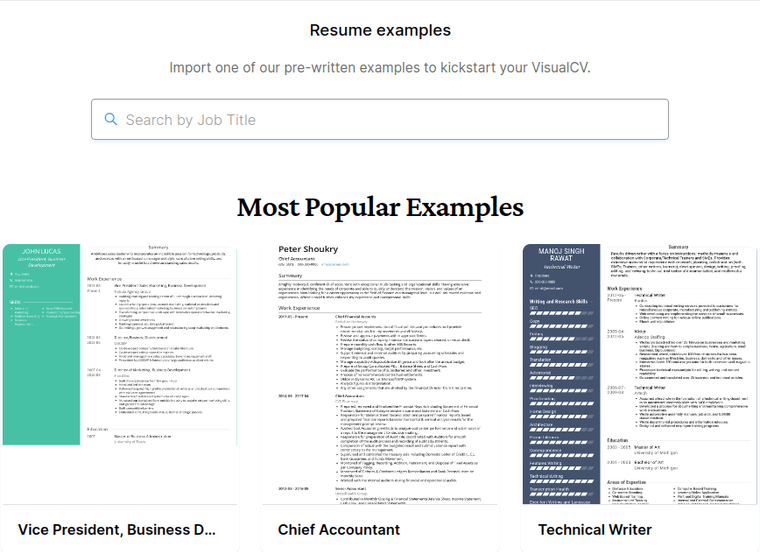
Australia CV Objective: It is recommended, though not mandatory, that you include a Career Objective at the top of your resume. This can also be called a Career Profile or Summary . Your objective serves as a short introduction to you and to your resume and should give the hiring manager a reason to continue reading. According to Karalyn Brown , “A resume without a career objective is like a movie without a title, or a trailer.” Your objective should be brief - three to five lines - and should give a very clear description of the experience you are bringing to the position, and what your goals and ambitions are for the role you are applying to.
Australia CV Work Experience: Display your work experience in reverse-chronological order, with your most recent position at the top. Each entry should include the beginning and end date of your tenure, and be sure to account for gaps in your employment. Give details about your work experience , including your responsibilities and achievements in each role. Use quantifiable information wherever possible, and use powerful verbs like ‘delivered’, ‘trained’, and ‘promoted’.
Australian CV Education: List your relevant degrees and diplomas in reverse-chronological order , including dates. Include the name of the institution, your major, minor, and specialization, as well as any significant awards you may have received.
Resume template: Browse through our gallery of Australian resume templates .
3 Australian CV Examples
Hr australia cv example.
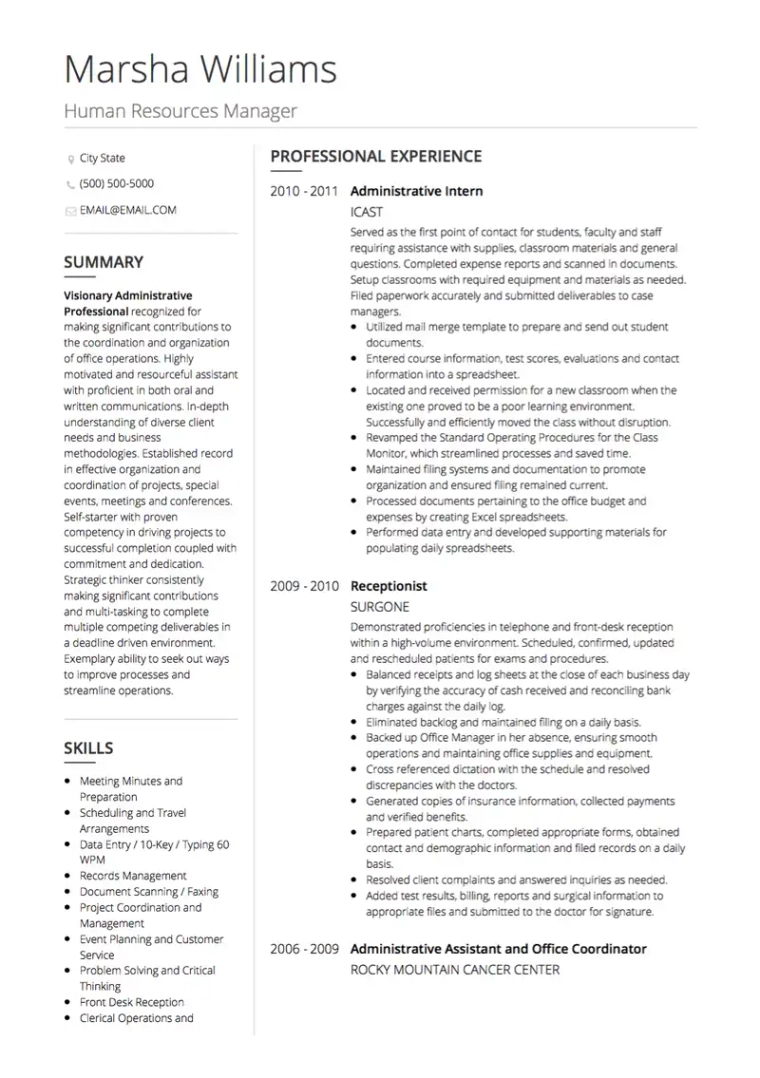
Engineer CV Example Australia
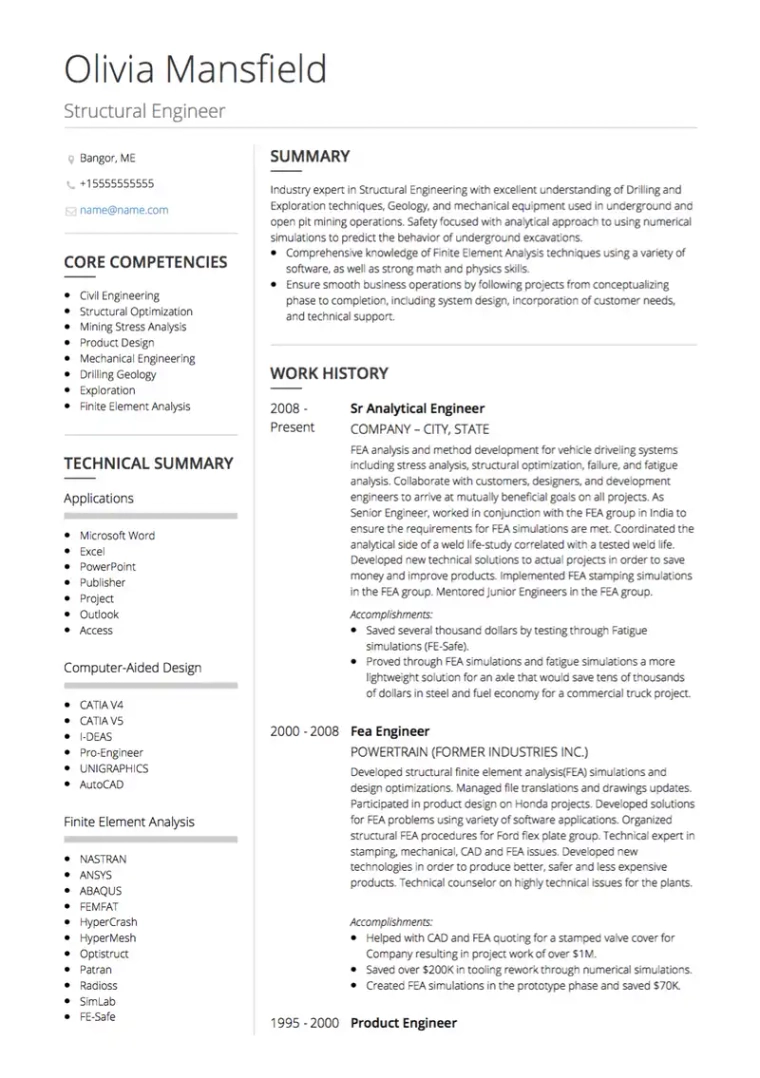
Australian CV example
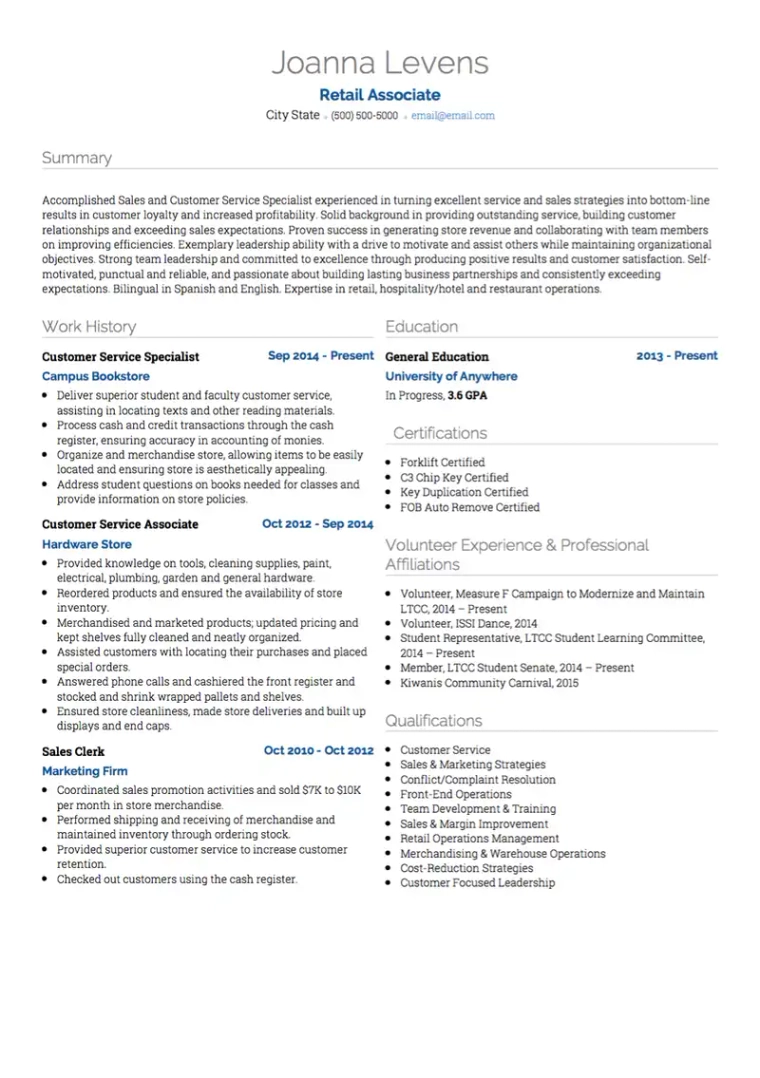
Other sections for your Australian CV:
If you have information that you would like to display that was not covered by the sections above, you can include them in a separate section on your resume. Other sections include:
Skills: It is common to include a simple list of skills kept separate from your work history. This is to provide a quick, at-a-glance look at what you excel at, without delving into your experience too much.
Volunteer Experience: Volunteering experience should be noted on your resume. If you prefer, you can include volunteer experience in your Work History section, but be sure to note when a role is a volunteer position. Languages: If you are fluent in multiple languages, noting them may be an asset.
References: A simple ‘References available on request’ note will do here. It is not necessary to provide references until requested to by an employer or recruiter.
Does Australia Use CV or Resume?
In Australia, CV and Resume are used interchangeably. So you are free to select between either as your word of choice.
How do I Write a Good Australian CV?
Important things to keep in mind while writing your Australian CV is that your CV should be more than 1 page, you should follow Australian English, avoid including a photo and customize your CV for each job that you are applying to.
What is the Right Length for an Australian CV?
Most Australian hiring managers expect a CV to be more than 1 page long. An Australian CV should expand in number of pages as the experience of the job applicant increases.
Should I Put Address on my Australian CV?
While we recommend that you add your current location on your Australian CV, adding the full address isn’t advisable. Avoid listing the street name and simply list the city and the state you live in instead.
Conclusion:
A well written and correctly formatted resume is integral to your job search. When applying for positions in Australia, it is important to tailor your resume to suit Australian CV requirements and expectations. Don’t let a poor resume stand between you and a great career in Australia!
Copyright © 2024 Workstory Inc.
Select Your Language:

COMMENTS
Ensure your resume is clearly laid out, with headings and bullet points to facilitate easy reading. Avoid large blocks of text. Print your resume. Make sure to print quite a few resumes (20-30) to hand in to places in person. You will probably want to modify your CV as time goes on, so it does not make sense to print many more.
In Australia, "resume" and "CV" refer to the same document. You can and MUST go longer than one page. 3-5 pages is ideal, but 2 pages can be acceptable if you don't have a lot of experience. Your resume has to be written using correct Australian English so always double-check that your spelling is right
Step 5: Write A Killer Headline. It's time to start writing your resume. Kick it off with a snappy headline that echoes the role you're seeking, acknowledges your current job title and is buoyed by relevant skills, specialisations or achievements.. The headline should live in the resume header, right next to your name.
How to Write an Australian Resume. Each part of your resume plays a crucial role in presenting yourself as the ideal candidate for the position. Here's the standard Australian resume format: Header with Contact Information: Your name, phone number, and email address should be prominently displayed at the top of your resume.
Include a summary job title e.g., Engineer or Customer Service Professional (make sure these fits with both your career history and the role you are applying for). If you are not yet located in Australia, and/or if all your employment experience is outside of Australia, mentioning your visa status will be important in this section, also.
In this article, we review why it is important to make a resume, discuss the standard resume formats, list the components that contribute to a strong resume and provide you with a step-by-step guide on how to craft your own resume. Related jobs on Indeed. Part-time jobs. Full-time jobs. Remote jobs.
Firstly, tailor your resume for each application. To make the interview shortlist, your resume must demonstrate that you possess most or all the criteria required in the job. Tailor your application for each position you apply for by expanding on your experience relevant to the job and cutting back the less relevant parts.
Australia CV Tips and Rules: Australia CV Length: For experienced professionals, a three or four page resume is expected in Australia. If you are recently graduated or new to the workforce, two pages is sufficient, but as soon as your work history is robust enough for three to four pages, your resume should expand accordingly.
Learn how to write your Australian resume to achieve your dream job in Australia. ... You must address career gaps in your resume. In Australia, hiring managers are usually pretty good with accepting you were on a career break to travel, study or care for a family member. Generally speaking, a career gap of six months or more can be including ...
Let's look at each of these components in detail. Consider how you might apply each of these when drafting or updating your resume. Related: How to Write a Reversed-Chronological Resume (With Template) 1. Apply appropriate margins Setting proper margins for your document ensures the information fits within a highly readable space on the page.